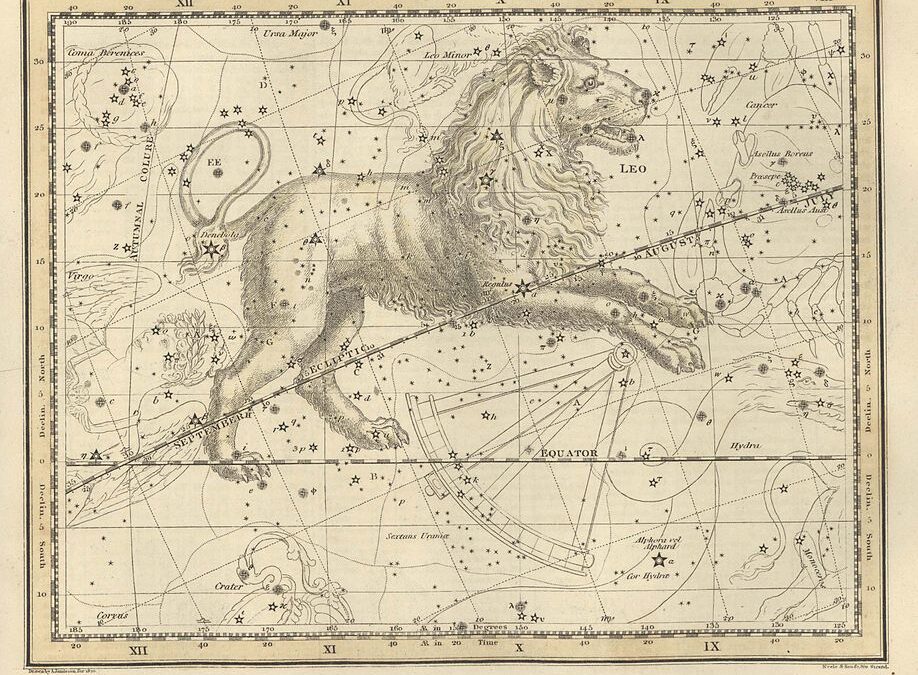On the evening of Wednesday, May 3, 2023, I was seduced outside by mildly crappy skies (instead of the forecast 100% cloud cover and rain) and a spanking new Nikon 18×70 IF WF binocular begging for starlight. Here is a shout out to my Cloudy Nights friends (particularly Nuge and Erik) who raved about this binocular until I finally gave in to temptation. (And, okay, I’m glad I did.) It was also a favorite of our missing friend MT4. The above image is Plate 17 from the Celestial Atlas of Alexander Jamieson, published in 1822. Image source: Wikimedia Commons.
I started with the open cluster M44 in Cancer, an outstanding binocular astronomy object of late winter and early spring months, easily seen and appreciated in light polluted suburban skies. This, along with X Cancri (a favorite carbon star) and the wide double star of Omicron 1 and 2 Cancri, physically related despite a separation of 975.8 arc-seconds, where my first views with the 18×70, mounted on an OB 4000 tripod.
Then I nipped across the street to ply the depths of Hydra in the (for my location) deep south, seeking additional carbon star rubies, U, V, and Y Hydrae. Honestly carbon stars are more orange than red, maybe coppery orange for the “deep red” stars, but still fun for all of that. More about that trio in another post.
Then it was back to my driveway for a quick ramble around Ursa Major with the 18×70 on a Farpoint p-gram.
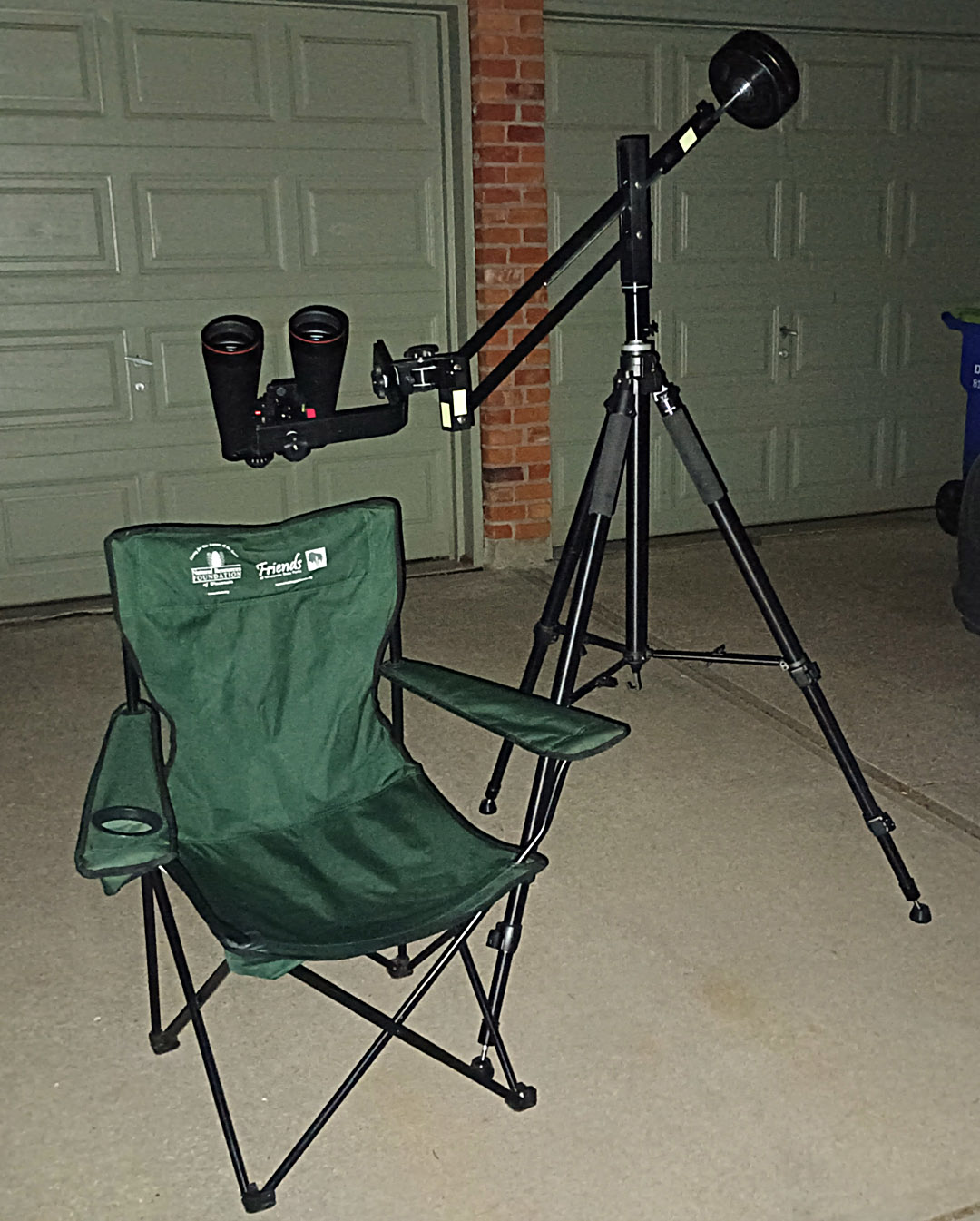
I stumbled on a pleasing double star in Draco (STTA 123), near Ursa Major, one of another trio I have observed with pleasure over the past few years.
STTA 127
13h51m +68*19′
6.53/8.32 87.4″ pa 62.0
STFA 25
13h13m +67*17′
AB 6.64/7.08 179.1″ pa 296.0
AC 6.64/8.89 105″ pa 223*
STTA 123
13h27m +64*44′
6.65/7.03 69.2″ pa 145*
My favorite of the three, though they are all nice binocular doubles.
I don’t seem to have color notes recorded in my journal, so that will mean a return visit soon. Anyway, a successful first light outing with a superb addition to the binocular team despite hazy skies and a 94% illuminated waxing gibbous moon. Time to call it a night and head back inside.
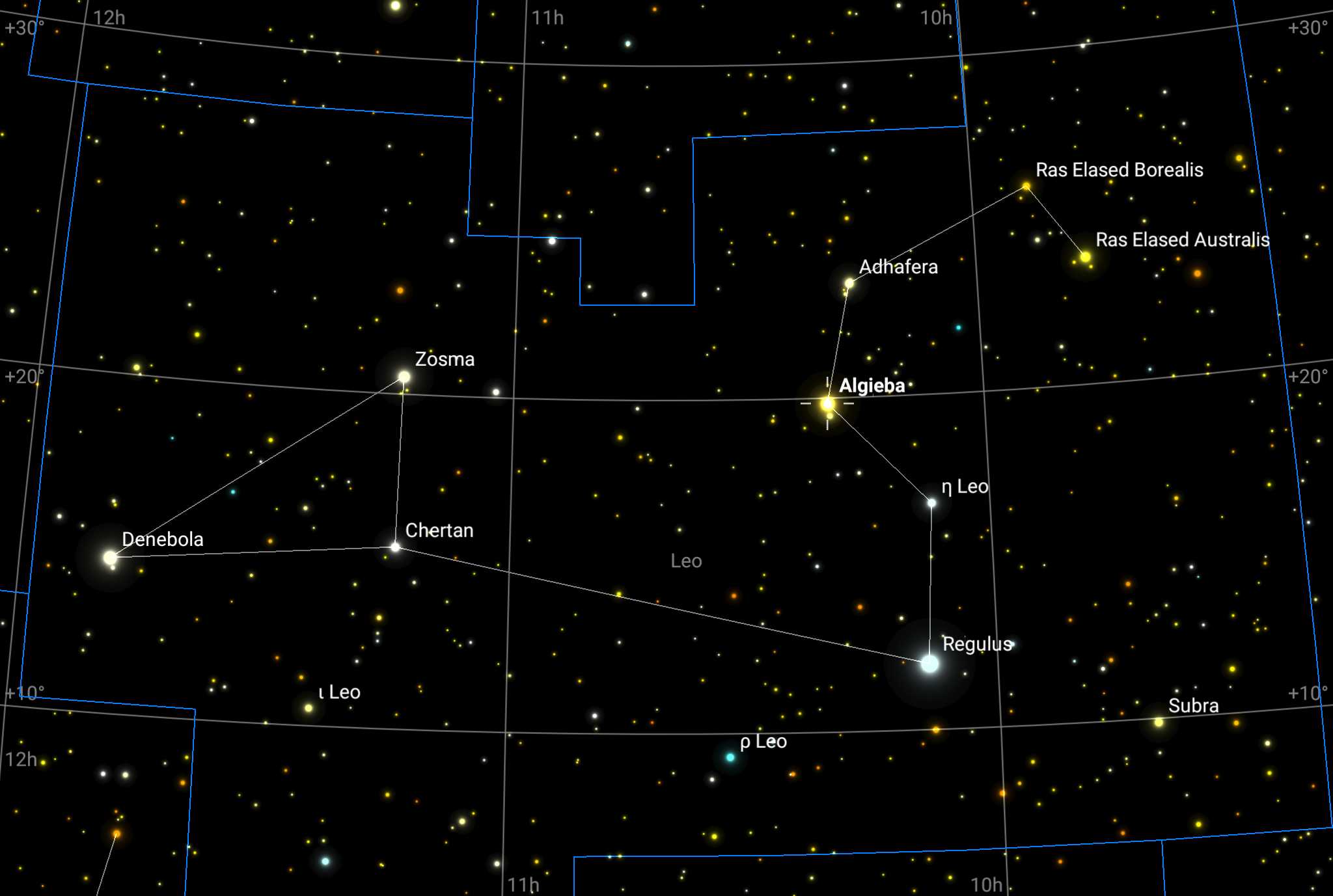
STF 1424 / Algieba
10h20m +19*50′
2.37/3.64 sep 4.73″ pa 126.6*
But then the thought of observing Algieba, a double star in Leo, occurred to me. And Leo was fortuitously positioned to observe from my driveway. Hmmmm. And a recent conversation on Cloudy Nights discussing the Oberwerk 100XL-SD versus the Kowa Highlander was fresh in my mind, both instruments ready to hand. Okay, it was already getting on in the evening, no time really for side by side comparisons, but I could have a peek at the double with the 82XL-SD with Pentax 10mm XW eyepieces (45x), easily deployed on the handy OB 5000 mount.
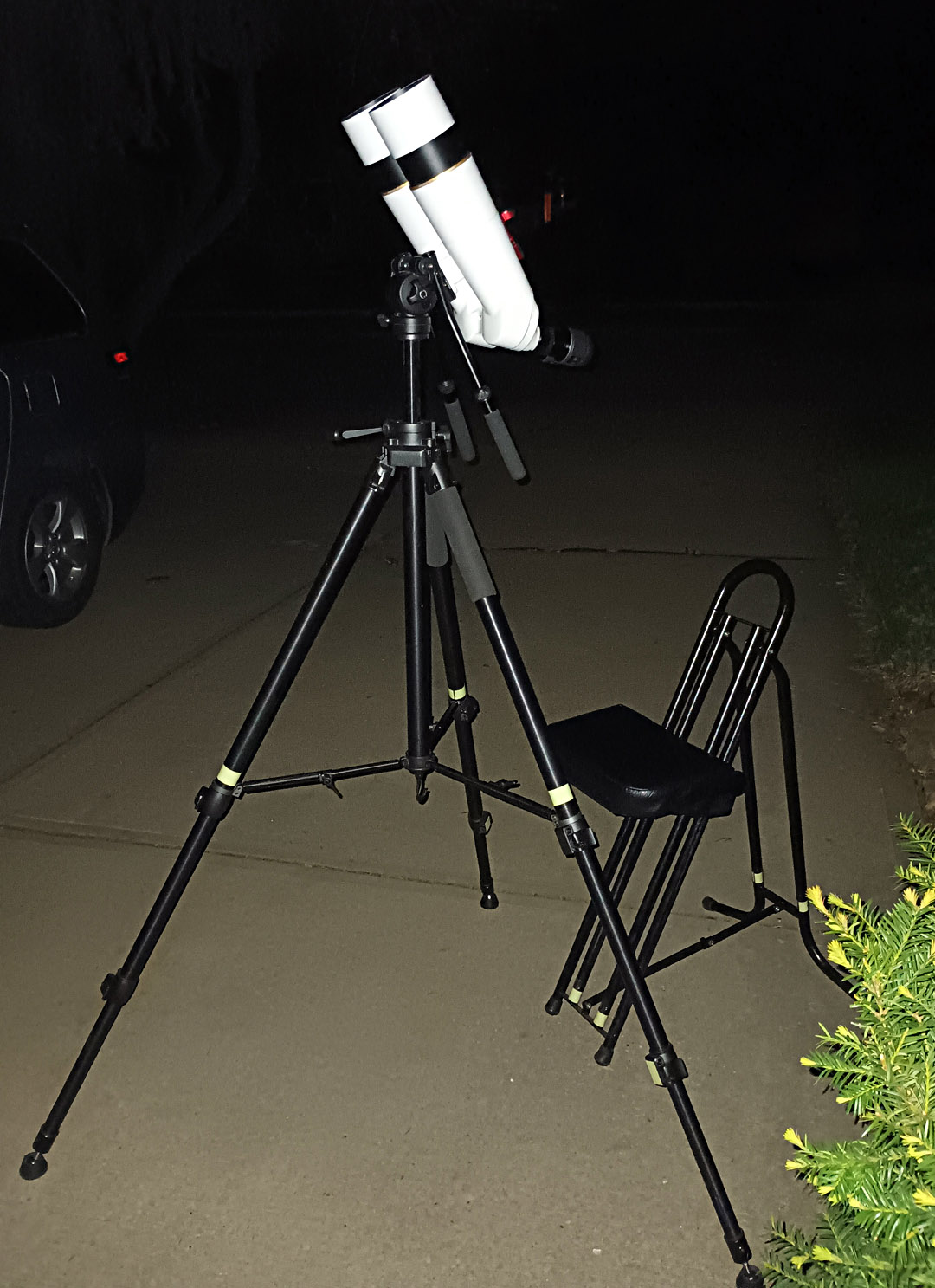
Four arc-second doubles are not beyond the reach of the 82XL in the range of, say, 5-8 magnitude. But second and third magnitude doubles so close are another matter entirely. The glare from the bright stars makes them difficult to resolve at typical BT magnifications, and hazy skies don’t help at all. Plus, it is possible that higher altitudes, like, say in Colorado, with steady seeing, might be more conducive to such observations than the murky churning spring atmosphere soup over Kansas. At least I have my suspicions about that. 🤔
I could see the A and B components of Algieba as two deeply yellow stars, but in contact, not cleanly separated. Hmmm. But surely with the 100XL-SD they could be fully resolved — 56x with the 10mm XWs. Shown here on a Manfrotto 475B tripod with an NT612 video head.
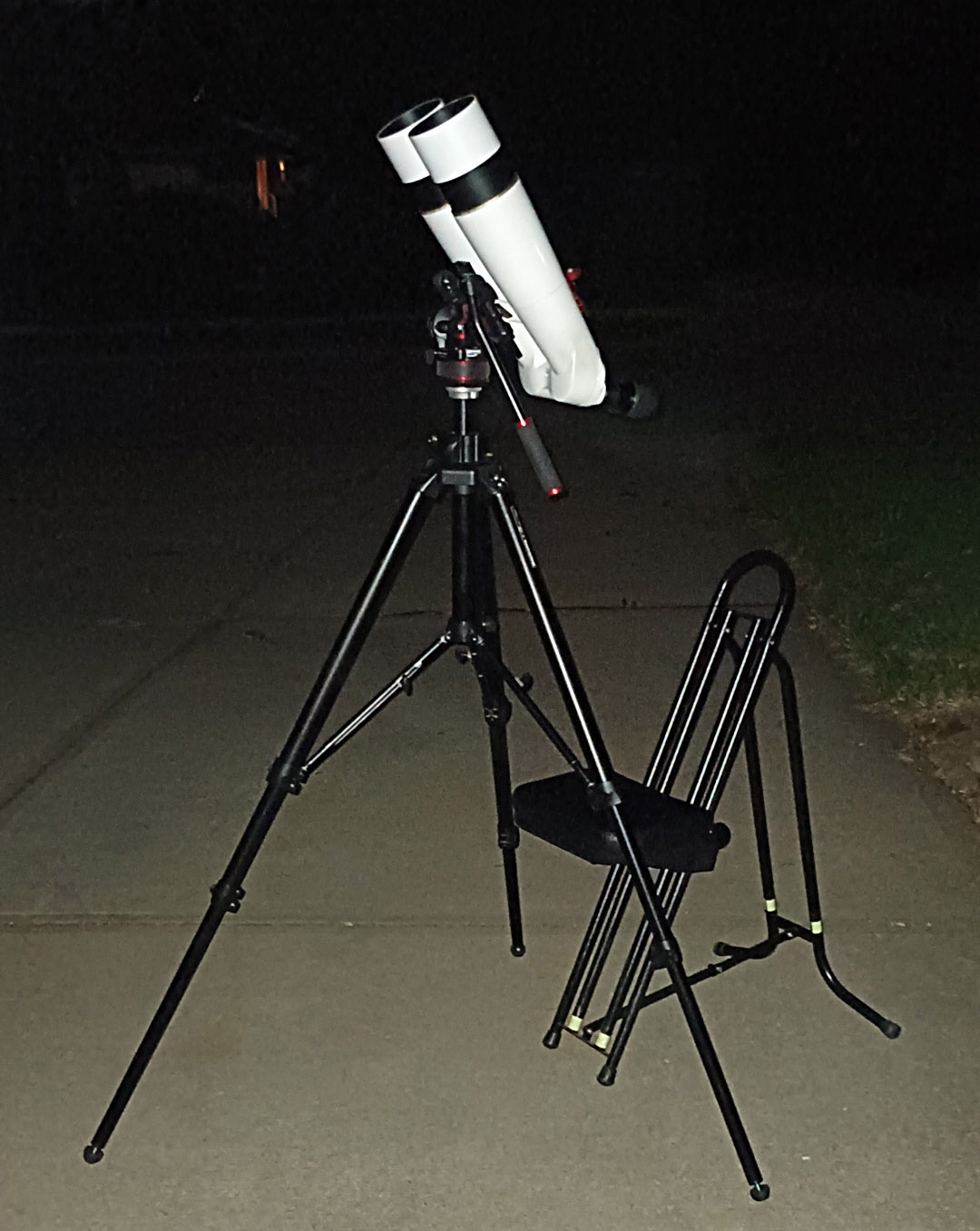
Better, but still not cleanly separated. Drat! 🧐How about the Kowa, then? With its 50x eyepieces? (Having lost all track of time.) Shown here on an Oberwerk TR3 tripod with a carbon fiber elevator and an NT608 video head.

About the same as the 82XL-SD. The 100XL-SD view noticeably better. (Point Oberwerk there, kids. 😉)
And the final insult. There was no turning back. Desperate times call for desperate measures.

The TeleVue-101 with a 5mm Nagler T6 eyepiece, triumphant at 108x. Both stars cleanly resolved.
And here is one final image from the night, for which I used “night mode” on my Moto G phone, thinking well this is a waste of time but we will see what happens.

BOTH Algieba and Zosma (major asterism stars in Leo) plainly visible in the handheld image. I couldn’t believe it. 😆 Also note the fortuitous positioning of Leo, which saw me to victory in an epic battle with the dreaded Pines of Roam, behind which many a constellation has disappeared while I was still longing to view its treasures. The Pines of Roam (instead of Rome) because of the necessity of roaming around the yard (and occasionally across the street) to view constellations to the west.

